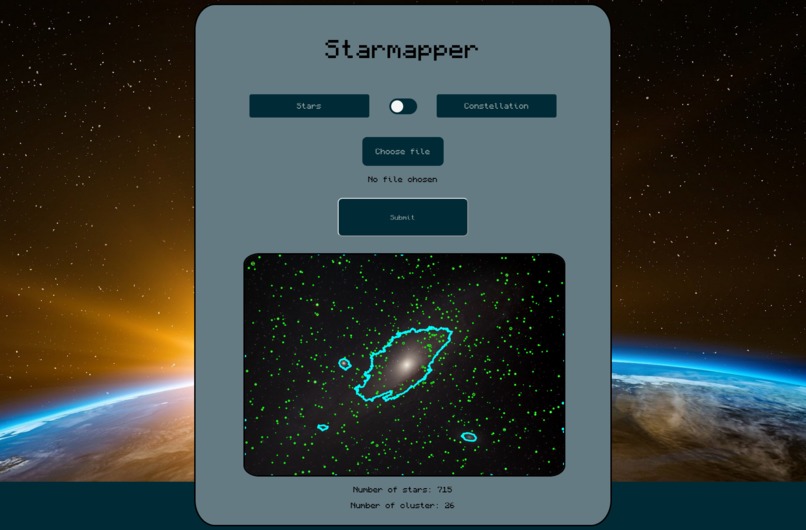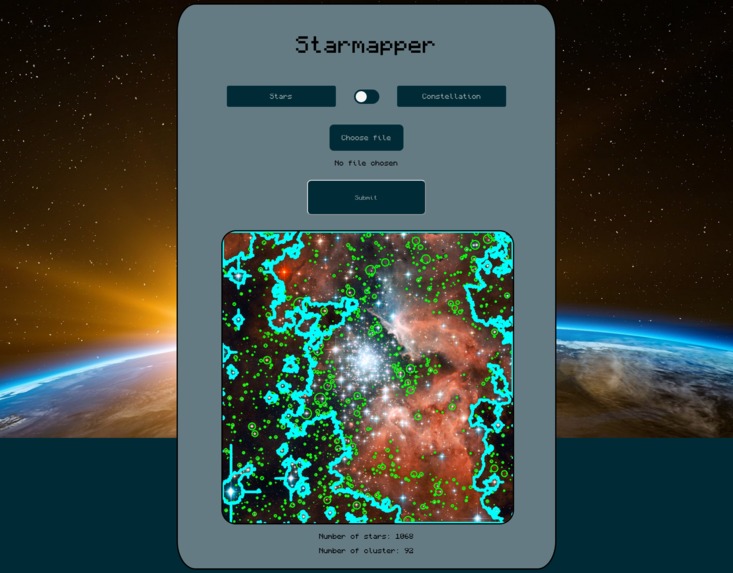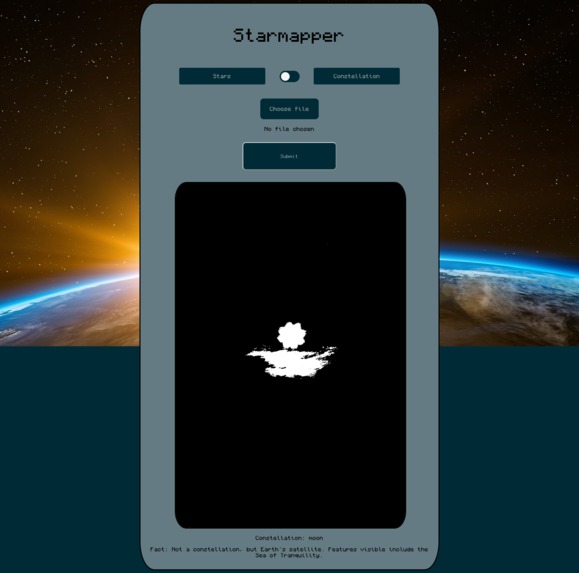Inspiration
We all have a passion for space and learning and we wanted to make a tool that supports this learning and makes knowledge about space easily accessible to everyone no matter where you are in the world and no matter how old you are.
What it does
We take in images of constellations (taken on any camera be it iPhone or professional), and provide the user with the option to either count the stars and clusters by then masking out the stars in the image and counting the occurrences. Or, using our model, provides an estimate of which constellation you are looking at and then provides a random fact about that constellation.
How we built it
Using a basis of Python for its strong machine-learning libraries, we trained a model on constellation data, that we had pre-processed using opencv to mask out everything but the brightest stars. This also allowed us to implement the ability to highlight and count the number of stars and output this to the user using the same code.
Challenges we ran into
We only had a Windows laptop to train the model on which led to slow and inaccurate training. Along with struggling to work out the correct mathematical techniques for masking out the stars.
Accomplishments that we're proud of
Have a semi-working model that can predict some constellations, coming from a team with little AI knowledge. And the ability to detect stars in poor quilty images.
What we learned
We learned how to train and use a tensor flow model, along with how to use Python libraries to clean up images and process them correctly. We also learned how to use Flask to easily integrate Python into a web backend.
What's next for Starmapper
A more accurate model, which has been refined and trained on much more star data. To be able to classify everything in the night sky from planets to planes. And teach people about the wonders of space.



Log in or sign up for Devpost to join the conversation.